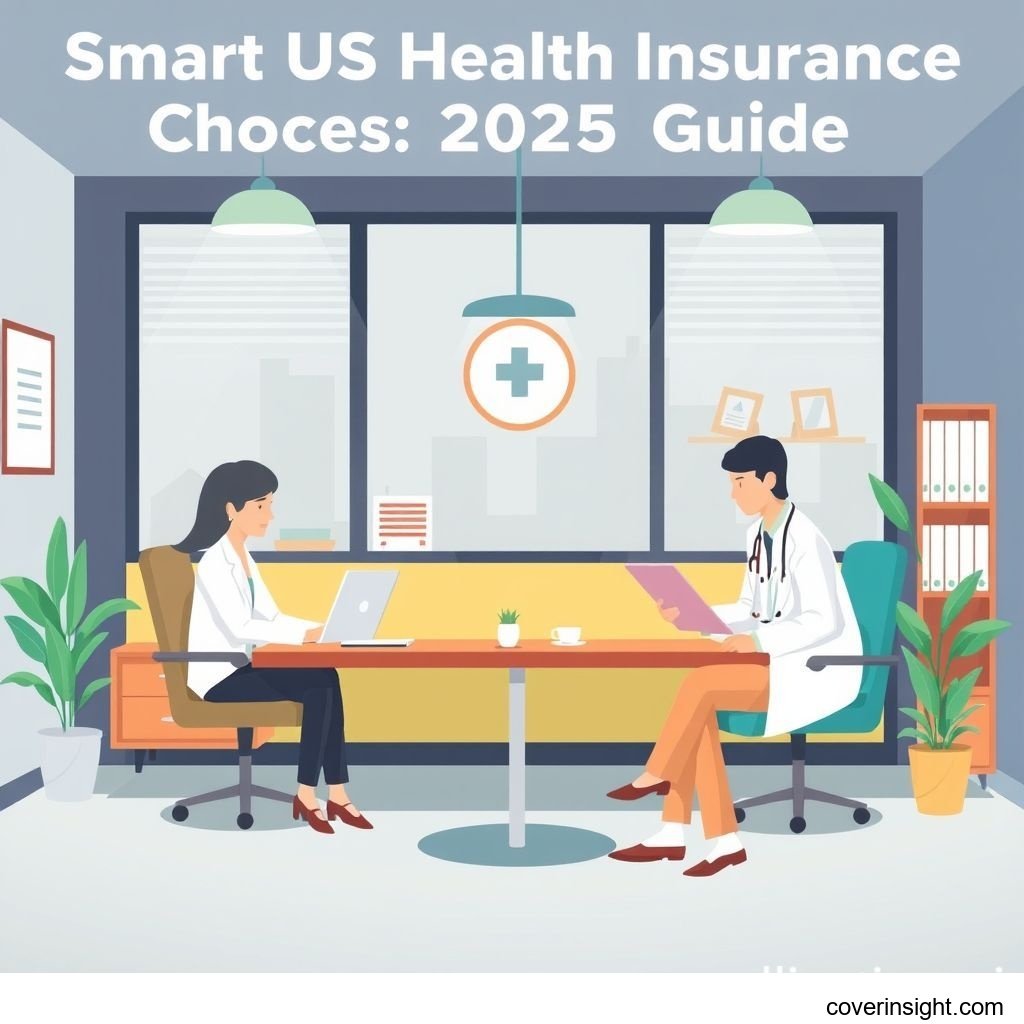Smart US Health Insurance Choices: 2025 Guide
Introduction
Navigating the labyrinthine world of medical insurance in the US for 2025 can feel like a daunting task, but securing the right coverage is more crucial than ever. With healthcare costs continuing their upward trajectory, having robust health insurance isn't just a good idea—it's a financial lifeline and a prerequisite for accessing timely medical care. This guide aims to demystify the process, offering insights to help you make smart choices for your health and wallet. For a broader perspective on global healthcare systems, you might find valuable information at Insurance Resources Global.
Coverage Details
What’s Included
Most standard health insurance plans in the US are designed to cover a broad spectrum of medical services. At their core, these typically include essential health benefits mandated by the Affordable Care Act (ACA), such as outpatient care, emergency services, hospitalization, maternity and newborn care, mental health and substance use disorder services, prescription drugs, rehabilitative and habilitative services, laboratory services, preventive and wellness services, and pediatric services. From routine doctor visits and annual check-ups to life-saving surgeries, a good policy acts as a buffer against the often staggering costs of modern medicine. For instance, a common scenario involves preventative care; many plans fully cover annual physicals and certain screenings, helping you stay ahead of potential health issues without hitting your deductible.
Common Exclusions
While comprehensive, no insurance plan covers absolutely everything. Common exclusions often include cosmetic surgery (unless medically necessary, like reconstructive surgery after an accident), experimental treatments not yet approved by the FDA, non-prescription drugs, travel vaccines for non-medical reasons, and certain types of long-term care that are typically covered by separate long-term care insurance policies. For example, if you're eyeing a nose job for purely aesthetic reasons, don't expect your health insurance to pick up the tab. It's always wise to dive into the fine print of a policy to understand what's explicitly excluded, preventing any nasty surprises down the line.
Cost Analysis
Price Factors
The cost of medical insurance in the US is far from a one-size-fits-all figure. Several key factors play into what you'll pay in premiums, deductibles, copayments, and coinsurance. Your age, geographic location (as costs vary significantly by state and even by zip code), the type of plan you choose (e.g., HMO, PPO, EPO, POS), and whether you smoke all influence the price. Additionally, the size of your deductible—the amount you pay out-of-pocket before your insurance kicks in—is a major determinant. Plans with higher deductibles often come with lower monthly premiums, and vice-versa. It's a bit like choosing between paying more upfront or paying more if you actually get sick. According to data analysis of Healthcare.gov plans, individual unsubsidized premiums in 2023 hovered around an average of $560 per month, though this figure can swing wildly based on the aforementioned factors and the availability of subsidies.
Saving Tips
When push comes to shove, everyone wants to keep more money in their pocket. To save on medical insurance, start by comparing plans meticulously on marketplaces like Healthcare.gov to see if you qualify for subsidies, which can significantly reduce your monthly premium. Opting for a plan with a higher deductible might lower your monthly payment if you're relatively healthy and don't anticipate many medical needs. Utilizing in-network providers is a no-brainer—going out-of-network can be a financial drain. Also, make the most of preventative care services, which are often covered at 100% and can help you catch health issues early before they become costly emergencies. Consider opening a Health Savings Account (HSA) if you have a high-deductible plan, allowing you to save tax-free money for medical expenses. A word to the wise: always ask for generic prescriptions when available; they're the same medicine, just at a fraction of the cost.
FAQs
How much does medical insurance cost? The cost varies greatly. For an individual, monthly premiums can range from under $100 (with substantial subsidies) to over $1,000, depending on age, location, plan type, and income. On average, an unsubsidized individual plan might cost around $500-$700 per month.
What affects premiums? Key factors include age, where you live, tobacco use, and the type of plan you select (e.g., HMO vs. PPO). Your income can also affect the subsidies you qualify for, effectively lowering your premium.
Is it mandatory? While the federal penalty for not having health insurance was eliminated starting in 2019, some states still have individual mandates and penalties. For instance, states like Massachusetts, New Jersey, and California continue to require residents to have coverage or pay a penalty. Check your State Insurance Departments website for specifics.
How to choose?
Consider your anticipated medical needs (how often do you go to the doctor?), your budget for premiums and out-of-pocket costs, and your preferred doctors/hospitals (do they accept the plan?). Balance lower premiums with higher deductibles and vice-versa. The National Association of Insurance Commissioners provides excellent resources for consumers looking to understand their options.
Consequences of no coverage? Without health insurance, you are financially responsible for 100% of your medical bills. This can lead to crippling debt from emergencies, hospital stays, or serious illnesses. A trip to the emergency room for a broken bone, for example, can easily run into thousands of dollars, potentially putting you in a deep financial hole if you have no coverage. This is a primary reason why, even with the federal mandate lifted, the uninsured rate, while fluctuating, remained at 7.9% for 2022, according to the U.S. Census Bureau—still leaving millions vulnerable.
Author Insight & Experience: Based on my experience navigating the US healthcare system, one of the biggest eye-openers has been the sheer diversity of experiences depending on your insurance plan. I've seen firsthand how a well-chosen plan can turn a potential financial catastrophe, like a sudden appendectomy or a chronic illness diagnosis, into a manageable situation. Conversely, I've also witnessed the heartbreaking reality for those without adequate coverage, where necessary medical care becomes a luxury they simply can't afford, often leading to delayed treatment and worse health outcomes. It truly drives home the point that health insurance isn't just a policy; it's a fundamental part of personal financial security and peace of mind in America. Ultimately, making the smart choice for 2025 means doing your homework and understanding what truly gives you the best bang for your buck and the most robust safety net. You can learn more about local options and connect with further resources at US Insurance Home.








Comments